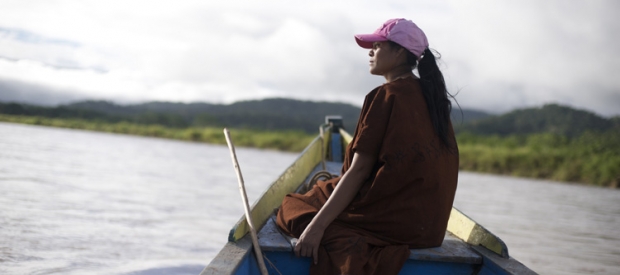Peruvian Amazon
The majestic Andes mountain range gives birth to Peru’s rivers, most of which drain into the Amazon River Basin. Representing roughly 60% of Peru's national territory, the Peruvian Andean Amazon includes major rivers such as the Marañón, Huallaga and Ucayali, and is one of the most species-rich areas on the planet. The vast tropical forest of the Peruvian Amazon is the fourth largest in the world after Brazil, Congo and Indonesia. It is an area of rich biodiversity, sustaining bountiful fisheries, diverse wildlife, and the livelihoods of indigenous and non-indigenous peoples. Its rivers provide the vast majority of the sediment, nutrients and organic matter to the Amazon mainstream.
The Peruvian government has plans to build more than 70 large dams in the Peruvian Amazon over the next forty years. A large number of these are planned for the Marañón and Ucayali river basins. If all of these projects were approved, the cumulative impacts would be devastating for riverine ecosystems, aquatic and terrestrial biodiversity, and the livelihoods of indigenous people and riverine communities in the Andean Amazon. Moreover these dam projects would have far-reaching consequences for critical ecosystem services in the Amazon Basin, as the impairment of natural flow regimes, sediment transport, water quality and fish migration accrues downstream into Brazil.
Twenty dams are planned for the Marañon River, one of the most important water sources in Peru, and up to thirty dams are planned for the Ucayali River complex. Four of these dams – along the Ene-Tambo River, an Ucayali tributary – are envisaged for export of electricity to Brazil, including the Pakitzapango and Tambo-40 Dams. These projects form a part of the Peru-Brazil Energy Agreement signed in June 2010, which commits Peru to supplying more than 6000 MW of power to Brazil in the next 50 years. In total, Brazil wants to build up to 15 hydropower plants in the Peruvian Amazon, all for export to feed Brazil’s giant aluminum and extractives industries.
These projects are being promoted in the absence of comprehensive energy options assessments for Peru and Brazil and without a clear understanding of the negative impacts which these dams would have on the people and ecosystem of the Peruvian Amazon. While forest conservation programs within the Amazon are longstanding and diverse, instruments for planning and implementing permanent protection of river corridors and their ecosystem services are generally absent in conservation planning in Peru.
Local opposition to these proposed project has been strong and International Rivers is working with Peruvian groups to defend Peruvian rivers and the rights of potentially affected communities. This opposition has lead to the suspension and cancellation of some of the key projects planned in the Peruvian Amazon, such as the Pakitzapango and Inambari Dams.
- Read our factsheet on dams planned for the Peruvian Amazon
- Visit our interactive Dams in Amazonia database to see planned dams for the Amazon Basin







